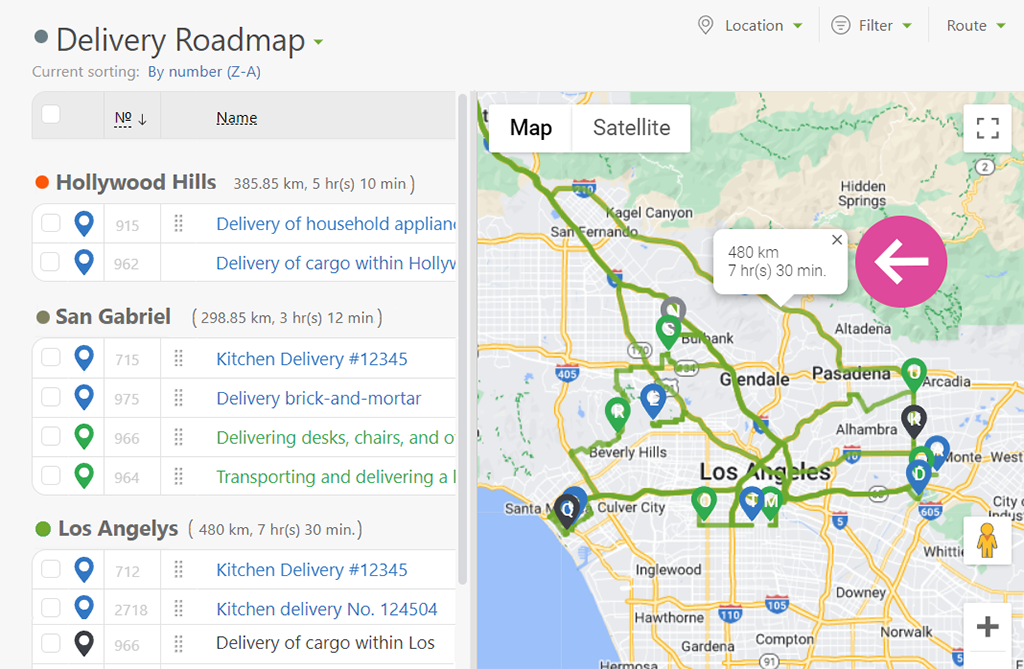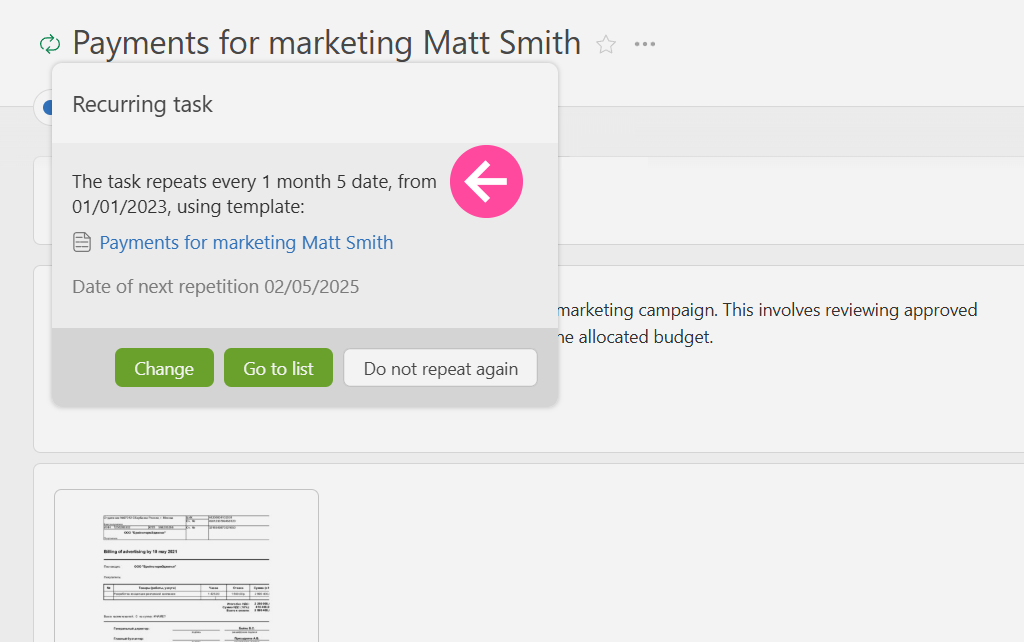
Let’s be real—workflow automation is like having a super-efficient robot teammate. In plain English, it’s about letting technology take over the boring, repetitive tasks so your team can skip the grunt work. By automating workflows, you save time, dodge unnecessary mistakes, and free up your people to focus on the big-picture projects that actually make a difference.
So instead of your team getting bogged down in mind-numbing paperwork and endless data entry, they can actually do the work they were hired for. No more getting stuck in tedious, mind-killing tasks. Your people get to focus on the cool, creative stuff that actually moves the needle for your business.
The best part? These tools don’t just save time—they cut down on those stupid human errors that happen when someone’s been staring at a spreadsheet for four hours straight. It’s like having a detail-obsessed colleague who never gets tired, never makes typos, and doesn’t need coffee breaks. Pretty sweet deal, right?
Why Workflow Automation is a Must-Have
There are loads of reasons why jumping on the task automation bandwagon makes sense for today’s businesses. First off, it’s a massive time-saver. Tasks like getting documents approved or assigning responsibilities — things that used to take hours or even days — are now done in a snap with automation tools. Take, for example, creating a project from a template to automatically assign tasks and deadlines to team members — it’s quick, easy, and efficient. This way, you can automatically distribute tasks and deadlines to your team members — it’s straightforward, quick, and super effective.
Another big win? Fewer mistakes. We’re talking about serious improvements in accuracy. Think about how often manual tasks like filling out forms or making reports leave room for human error. With the automation of processes, those errors become almost nonexistent. What about scheduled reports? Done. Are data pulled from the database right when you actually need it? Easy. It’s all handled for you, automatically and on time
But there’s more: automation tools make everything flow better. Your team spends less time chasing unneeded approvals or digging through instructions for information and more time doing the actual work that really matters. Happier teams, smoother workflows, and projects that get done faster and in a better way than ever.
Key Use Cases of Workflow Automation by Industry
Workflow automation perfectly fits into just about any industry, tackling most of the challenges and making everyday tasks run smoother. Whether it’s marketing, healthcare, sales, or IT, automation helps businesses stay on top of things, cut down on inefficiencies, and get better results.
What makes workflow automation so exciting is how flexible it is. It can take care of the boring, repetitive stuff, manage complex scripts and processes, or even ensure compliance with local and international regulations. Every team has something to gain. Let’s break down some of the coolest examples of how different industries use automation to work smarter and innovate faster.
- Manufacturing: In manufacturing, automation keeps the gears of production moving smoothly, from the assembly line to inventory shelves. It ensures every product is top-notch by keeping assembly tasks consistent and cutting down on human errors. Robots are perfect for putting together tiny parts accurately, and software systems keep tabs on inventory, and auto-ordering supplies before you run out. This tight ship means less downtime and lower costs.
- Healthcare: Healthcare sees some of the best boosts from automation, especially in managing patient care and records. Automated systems organize patient appointments, track treatments, and ensure all departments are in the loop. Real-time updates in electronic health records mean that healthcare professionals can access crucial patient information instantly, leading to better diagnoses and treatments. Even pharmacies are automated to handle prescriptions, stock management, and safety checks for drug interactions.
- Finance: The finance world relies on automation for handling data, sticking to regulations, and keeping customers happy. Automated tools take care of transactions, keep an eye on compliance, and even spot potential fraud. Automated reports make regulatory audits a breeze. Plus, chatbots and AI interfaces can manage customer queries around the clock, reducing the need for human staff.
- Retail: Retailers use automation to understand and connect with customers and streamline logistics. Systems that track shopping behaviors help tailor marketing efforts and special deals. On the logistics side, automation assists in stocking, order processing, and route planning, which means happier customers thanks to quicker, more accurate deliveries, all while shaving costs.
- Education Schools: and colleges are turning to automation to handle the admin work and customize learning. These tools deal with enrollment, grading, and attendance, letting teachers focus more on education. Adaptive learning tech adjusts the educational content and tests based on each student’s progress, boosting learning effectiveness.
- Telecommunications: Telecom companies use automation for keeping networks smooth and customer service snappy. Systems monitor traffic, manage capacity, and quickly spot outages to keep everything running smoothly. Automated customer service tools, like chatbots, help solve common problems fast, enhancing overall service.
- Utilities: Utility companies find automation essential for keeping operations tight and resources in check. Systems that track and predict energy use can adjust supplies, helping to manage resources better and keep services steady. Automating customer interactions and billing also cuts down on overheads and enhances customer experience.
- Information Technology: In IT, automation is crucial for keeping data safe and operations running smoothly. It backs up data automatically, watches for security threats, and enforces rules. IT service tools streamline everything from help tickets to managing incidents, making sure help is quick and effective.
- Logistics and Transportation: In logistics, automation is all about optimizing routes, managing fleets, and handling cargo efficiently. Tools schedule vehicles plan the best routes, and track deliveries in real time. This not only boosts operational efficiency but also keeps customers happy with timely and reliable services.

- Real Estate: In the real estate world, automation smooths out property management, sales, and client relations. It handles listings, client questions, leases, and maintenance without a hitch, letting property managers focus more on tenant relationships and strategic growth.
By leaning into workflow automation, industries aren’t just boosting efficiency and cutting costs—they’re also enhancing customer experiences and paving the way for further innovation. As tech evolves, expect even more powerful automation tools that can transform the way businesses operate and grow.
Making Your Workday Way Easier with Workflow and Task Automation in Planfix
Let’s be real – workflow automation isn’t just some fancy tech term for big corporations. It’s a total game-changer for pretty much anyone trying to get stuff done more efficiently. Whether you’re running a tiny startup, managing a small business, or part of a massive team, automating those mind-numbing repetitive tasks can seriously upgrade how you work.
Here are some practical ways workflow automation in Planfix that can be your secret productivity weapon:
Get Those Documents Approved
Remember that soul-crushing experience of submitting a critical document and then… crickets? Days turn into weeks, and your paperwork sits in some administrative black hole. Ugh. Modern workflow systems are total lifesavers here. They zip documents directly to the right people, with smart reminders built-in. No more chasing approvals or wondering what happened to your submission.
Smart Team Task Matching
Managing team workloads used to feel like solving an impossible puzzle. Who’s the best fit for this project? Who’s already drowning in work? Who actually has the right skills? Now, intelligent systems do all that heavy lifting for you. They match tasks to team members based on their strengths, current workload, and upcoming deadlines. The result? Work gets done faster, smoother, and with way less stress for everyone.
Goodbye, Manual Data Entry Nightmare
Let’s be honest – manually entering data is about as fun as watching paint dry. Automation tools can sync information between systems, cutting hours off your workload and basically eliminating those annoying human errors. Picture this: in Planfix customer records updating automatically, survey results importing seamlessly – all without you breaking a sweat or making a single typo.
Never Miss a Beat with Smart Reminders
Forgetting a critical task or deadline can totally derail your day. Automated reminders are like having a super-efficient personal assistant, keeping everyone on track and ensuring nothing important slips through the cracks.
Instant Insights, Zero Effort
Need to make a quick decision? Forget manually hunting down and compiling data. Automation tools can generate real-time reports packed with actionable insights. Whether you’re tracking sales trends or checking team performance, with Planfix you’ll always be ready to make your next move.
Quick example: Marketing teams are killing it with email automation. From sending follow-up emails to scheduling newsletters, these tools ensure messages go out at the perfect moment – giving your audience that personal touch without you having to do all the grunt work.
Kicking Off with Workflow Automation
Diving into workflow automation can seem daunting, but breaking it down into manageable steps can simplify the whole process. Here’s your game plan:
- Spot the Time Sinks: Kick things off by identifying the repetitive tasks you or your team keep tackling frequently. Focus on anything that’s gobbling up too much time.

- Sketch Out Your Current Workflow: Take a good look at how these tasks are currently handled. Could there be a smoother approach? Pinpoint where throwing in some automation could really shake things up.
- Choose Your Arsenal: Find the automation tools that best fit what your team needs and what you can afford. Whether it’s managing and tracking emails, organizing schedules, or handling tasks, picking the right software is a game changer.
- Run a Pilot: Roll out your workflows and take them for a test drive. Watch out for any glitches or snags so you can iron them out ASAP.
- Update as Needed: Remember, setting up automation isn’t a set-it-and-forget-it kind of deal. Make it a point to regularly review your workflows to ensure they’re still hitting the mark.
For instance, consider a marketing team looking to refine their lead follow-up routine. By mapping their process, they discover steps like scoring leads based on behavior and sending personalized for each user emails that could be automated. After they have set up and fine-tuned their system, and it becomes crystal clear how the scripts work automatizing strategies, enhancing lead engagement, and streamlining their efforts.
Challenges and Best Practices
Automating workflows isn’t always a smooth ride. Some common bumps in the road include people being resistant to change, hitting technical roadblocks, or using tools that just don’t fit well with current processes. But don’t worry — these hurdles can be tackled with a solid plan and the right mindset.
A great way to get started is to keep it simple. Focus on automating a straightforward task first, so your team can ease into the process and see the benefits right away. Make sure to involve everyone who will be using or impacted by the automation; their feedback is pure gold and helps everyone feel included in the change. Lastly, don’t set and forget. Regularly check in on your workflows to make sure they’re still doing what they’re supposed to do as your business grows and evolves.
When done right, workflow automation can totally transform the way businesses operate. It saves precious time, reduces errors, and makes collaboration a breeze. The examples and tips shared here are just the starting point. By taking small steps and building on those wins, you’ll quickly see how automation can streamline your processes and supercharge your business growth. So why wait? Take that first step today — embrace automation and unlock its incredible potential for your team!

